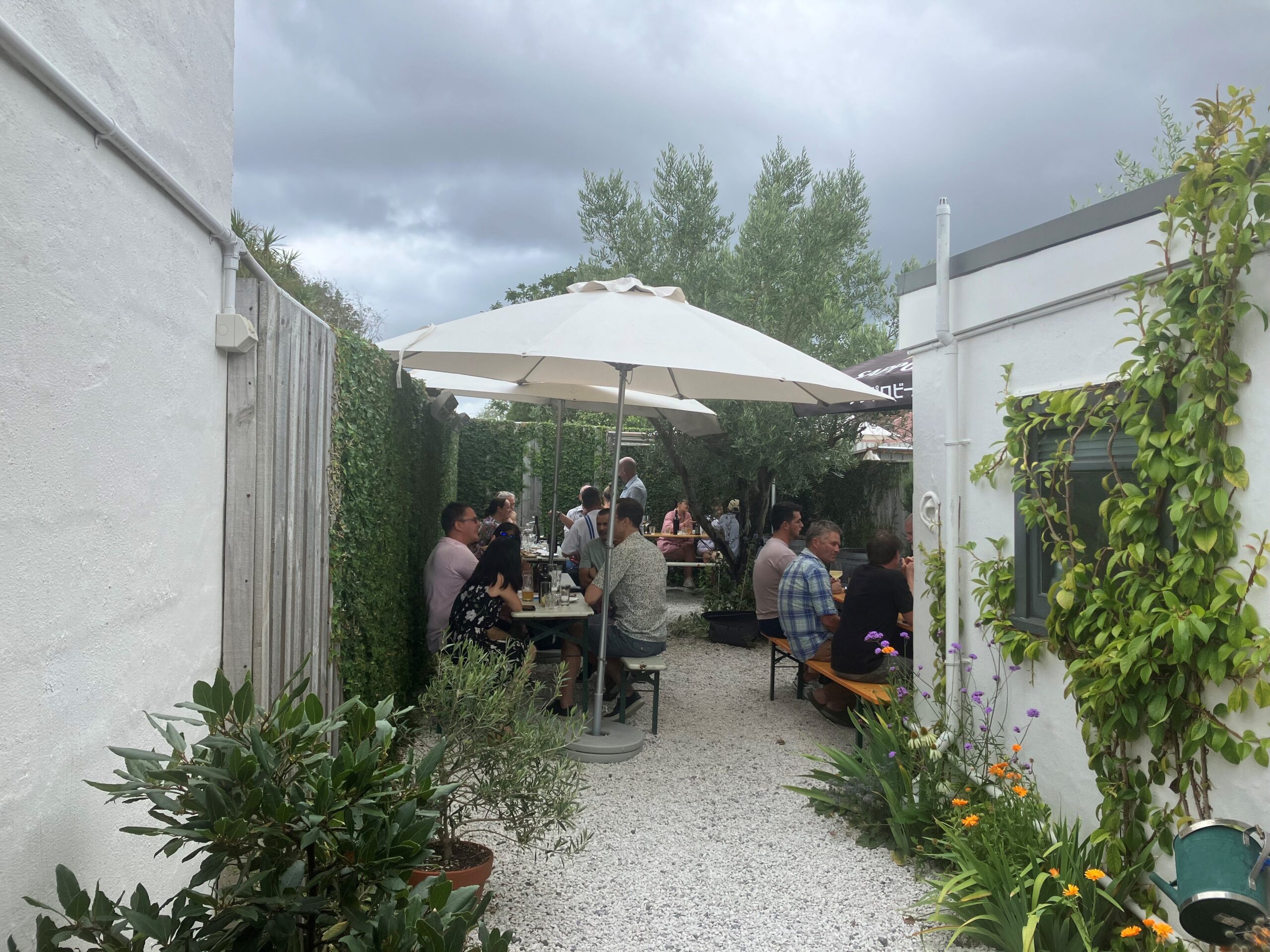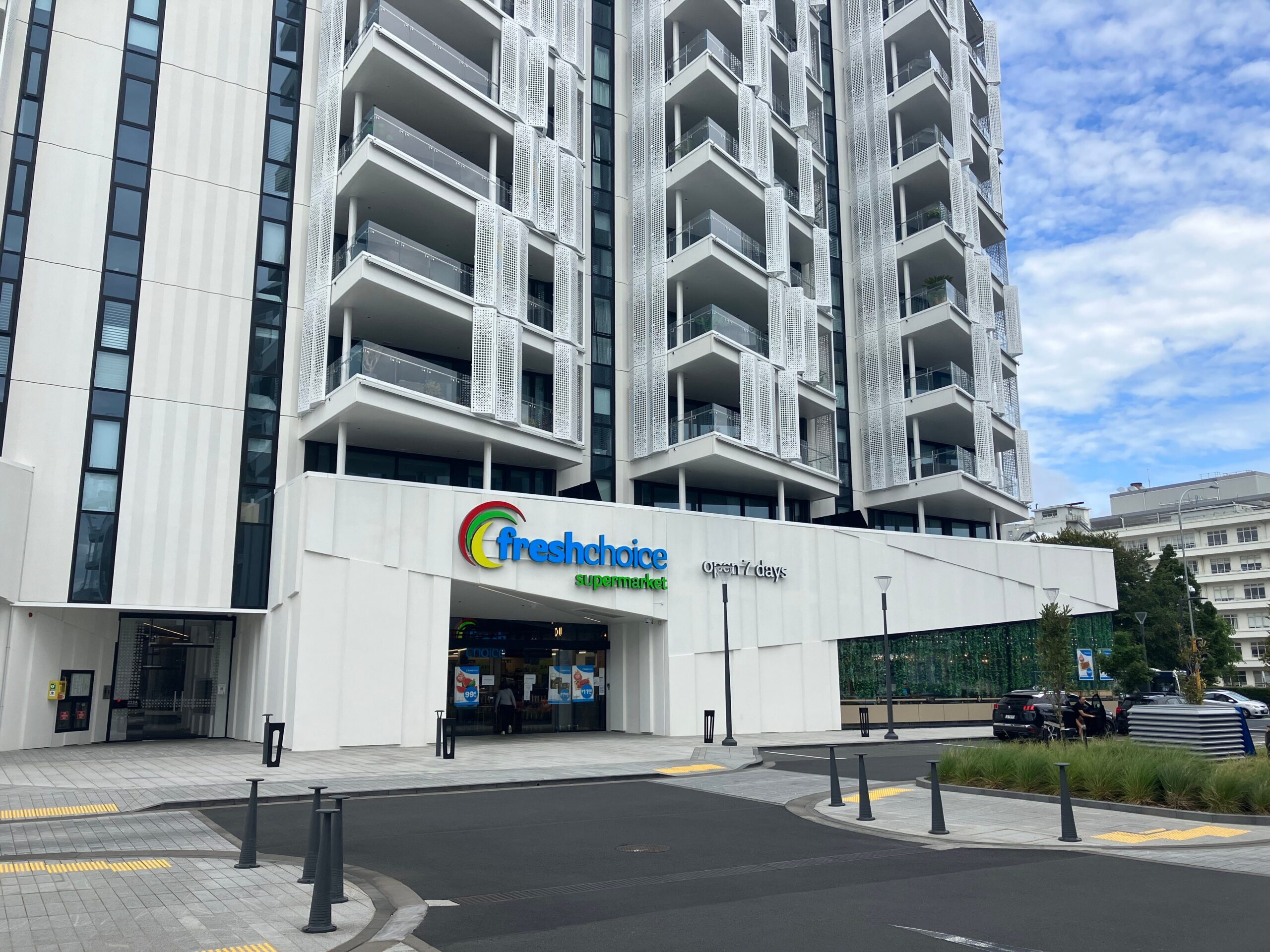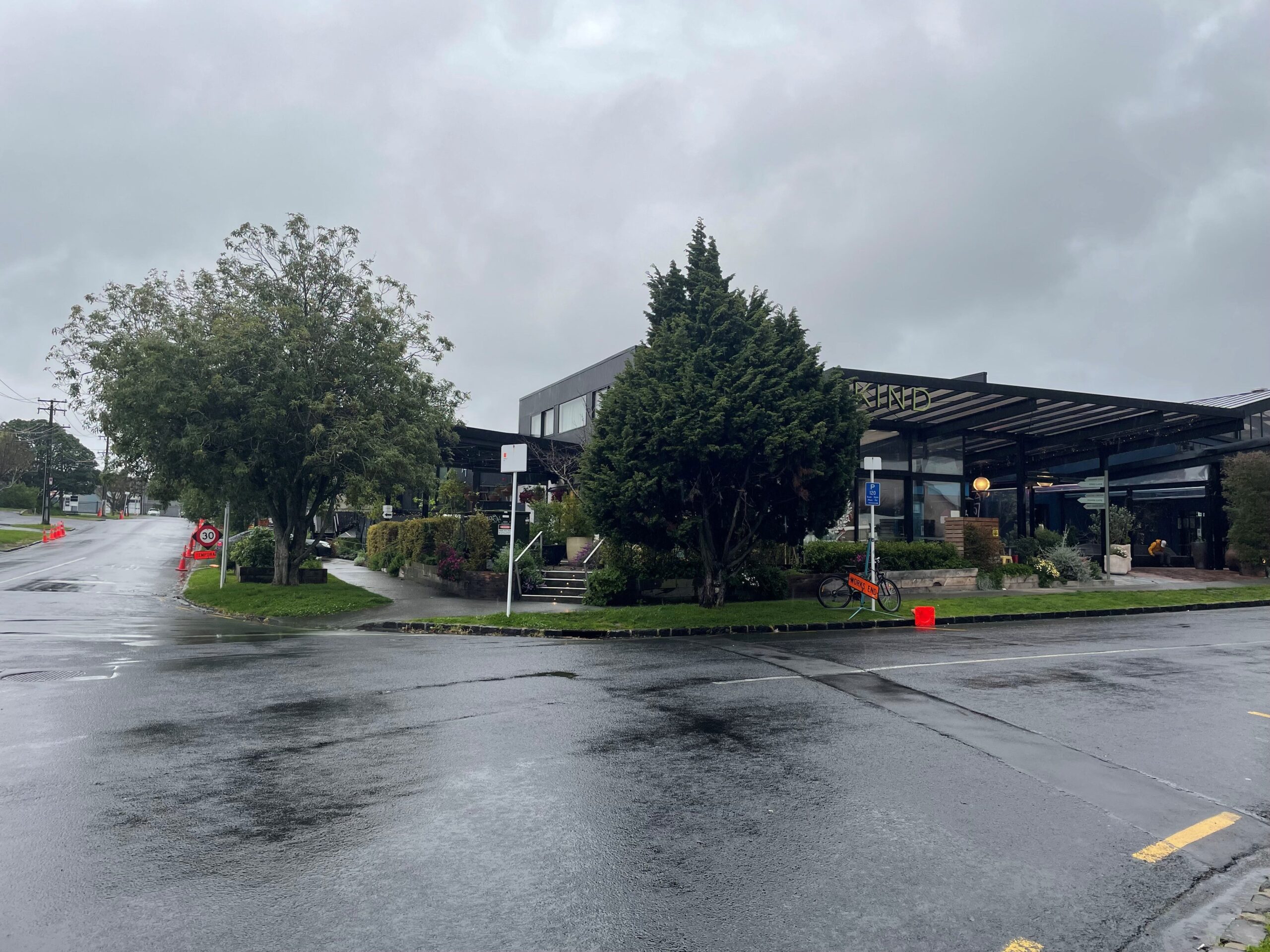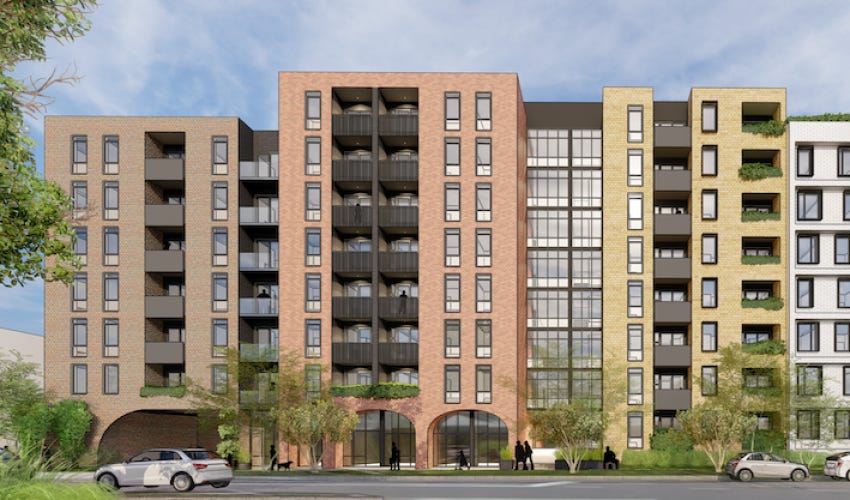This is a guest post by Malcolm McCracken. It previously appeared on his blog Better Things Are Possible and is shared by kind permission.
Do you get excited when a new business comes to your neighbourhood? Perhaps it’s a new coffee shop, a takeaway restaurant, a dairy (“convenience store”, for international readers), a flower shop or a bar. Whatever it is, have you ever asked the owner how easy it has been to set up? How easy it was to find a space to open their business in?

Historically, many councils around New Zealand have sought to manage commercial land supply through district plans. This is often underpinned by fears of oversupply leading to emptying existing town centres. One of the most notable examples of this was in Ashburton where a plan change was passed to “strengthen the role and function of the Town Centre”, not through significantly liberalising the Town Centre zoning to enable greater mixed-use development, but through restricting commercial development elsewhere to try force investment in the Town Centre. One outcome was a developer being restricted in what businesses could operate within an existing commercial development. This fear of the impact of new commercial development exists in far larger urban areas too.
Ultimately, seeking a “goldilocks” right-sizing of commercial land supply constrains the market’s ability to meet demand, not just for overall supply and across different scales of commercial development, which pushes up prices, but also to meet location choice. Location choice is critical for responding to changes in land use and travel patterns.
During Covid-19 lockdowns and subsequent work-from-home trends, we saw many city centres around the country struggle, while local centres and cafes in suburban locations did relatively well. As our cities see more medium-density residential development within the existing urban area on the back of the National Policy Statement on Urban Development (NPS-UD), we will see this further demand in suburban centres. Enabling new commercial opportunities is critical to creating thriving, liveable neighbourhoods.

Creating scarcity of commercial land also limits the ability for amazing new neighbourhoods, precincts and third places to pop up, at both the premium end of the market, as well as at the affordable end.
A recent article on The Spinoff highlighted how Dominion Road has developed as a centre for Chinese cuisine and culture. What this story didn’t mention is the history of the Balmoral shops, which originally developed in the 1920s as a local centre with everyday services to support new housing that developed around the expanding tram network.
The establishment and growth of St Luke’s Shopping Centre, just along the road, led to the stagnation and decline of Balmoral as a local services centre. It is from this decline, increase in vacancies, and in turn more affordable commercial rents, that the Dominion Road we now know and love could grow. The same can be said for the iconic Karangahape Road, which was once one of Auckland’s main shopping precincts but suffered from the construction of the Central Motorway Junction and went into a period of decline before its reinvention over the past decade or so.
Periods when those areas were run down and empty could be seen as an oversupply. But fundamentally, these precincts tend to grow out of depreciating commercial properties in low-demand areas, which translates to affordable rents that provide critical affordable commercial opportunities. Ultimately, our cities are far richer and diverse because of this.

At the other end of the market, the wonderful Morningside Precinct has grown through significant renovation and newly built commercial spaces in a former light industrial area beside Morningside Station. Through the Auckland Unitary Plan, this area was rezoned to Business – Mixed Use, enabling a greater diversity of activity; and the precinct now has a range of cafes, bars, event spaces and a gym. The NPS-UD will see height limits increase to enable at least 6-storey development. We have already seen Simplicity Living announce a major apartment building next door. Without the underlying Mixed-Use zoning, it would have been more difficult for this precinct to be built and harder for it to grow in the future as the area embraces more medium-density residential.

Promisingly, we may see moves to liberalise zoning to enable more mixed-use development, at least within walkable catchments of rapid transit and centres, as part of the Government’s Going for Housing Growth policy.* If implemented, this could enable the creation of new centres, third places that feature commercial and retail spaces to support higher population densities.
*Note: I have previously provided coverage of the Going for Housing Growth policy. I wish to note to readers that I was appointed to an expert advisory group to advise on Going for Housing Growth, so my commentary on related matters in future will be more limited.
I do of course acknowledge that declines in town centres and commercial areas do occur. Sometimes, this is due to externalities like construction – see for example the impact of City Rail Link on Albert Street in Auckland, and the high number of projects impacting the Tauranga City Centre – and policies for compensation and activation come in here. But often it is simply due to economic downturns, changes in demand for retail and commercial, or growth patterns.
Councils that are concerned about maintaining a thriving centre need to evaluate policies, particularly on the land-use planning side as well as transport, to consider how they are best placed to support this. This includes but is not limited to:
- Reviewing district plans to encourage re-development in their town centre(s) by enabling greater development and mixture of uses to occur. See Avondale as a case study.
- Reviewing their parking policies to ensure the turnover of car parks to support local businesses. This can occur through time limits and/or (more ideally) pricing to ensure some parking is free for those who need it while encouraging those staying longer, particularly workers, to park slightly further away.
- Working with businesses to guide place-making initiatives.
- Reviewing and changing bylaws that restrict footpath food and beverage opportunities. Make people and activity in your centre visible!
- Undertaking access studies to identify and then implement improvements that make the centre easier to get to by different transport modes.
However, more generally speaking, vacancies of commercial premises provide opportunities – as does greater flexibility in district plans. Towns and cities exist because of the opportunities they create for employment, education and social interaction. Too often we implement policies which restrict this from happening by constraining supply. Instead, let’s let them flourish.

Keen to read more on the abundant benefits of mixed-use development? Check out this postcard from Japan and three previous posts by Scott Caldwell: on Building Local; a modest proposal to Abolish Zoning; and this classic post featuring the “Corner Site Wildcard” proposition.


 Processing...
Processing...
Thanks for the post Malcolm
would you be open residential mixed use as in Netherlands
Delft – allows residential on ground floor through out it inner city including central square.
Vlaardingen – has been had €3m of subsidies available for landlords to convert retail to ground floor residential in it city centre.
Here in Hamilton it is a NC in all commercial zones
Hi Peter, to understand your question, you seem to want to enable more ground floor residential? I don’t think it should be N/C in most places (other than industrial zones). How much empty retail do you think exists in Hamilton where it would be worth converting though?
More apartment buildings with supermarket “metro” stores underneath would be great, especially if the prices sold in those stores were the same as the big box ones. Would encourage people to walk to shop, call in on way home, etc as you do in other big cities.
Obviously the range of these stores can be an issue and potential for non-standard pricing.
I often think about the Highbury block at Birkenhead, has all the pitfalls of a mall – lots of carparking, wasted space, now “two” fast food outlets on the edge.
This whole block could be mid-high rise with amazing views and shops/doctor/florist at ground level. Little parking, close to high frequency bus. So lots of local people walking and using the local amenities.
Highbury is the worst outcome for a small centre you could ever find, absolute waste of space they had up for sale. Can imagine the planning meeting now, ‘hear me out, revolutional idea…how about Drive Thru Maccas and KFC?’
Insane, I thought when they demolished the gross old KFC something useful was going to happen.
Surely now is a great time though for other parts of the blocks, all the big old banks have gone now with aging buildings looking fairly dismal. We don’t need more chemists and barber shops and real estate!
Oh but you gotta see the facebook local group comments. People were over the moon about Maccas, it was like the best thing since sliced bread there.
When there is a recession on (as now), all the discretionary spending gets held back, so people stop going to nice places for dinner. Low budget options such as KFC, Maccas, BK all keep going, as they are seen as “budget solutions”. Others also keep going, like barbers and hair dressers, as we are all into more/less hair these days, and so they are in the essential services category. Much of our hospitality landscape will continue to be wiped out. Sadly it is not the best that will survive, just the best backed /most determined to hold on despite years of losses. If you want your favourite restaurant to survive, you may need to go there twice a week for the next couple of years to help tide it through…
In many ways, Singapore is the best example, because they have so little land, and have for their entire existence had to make use of very little territory.
While there are serious political differences that would not be welcome here, the city state model is something that our city would do well to emulate; we are half of the country, we are just too far apart to bring the warmth of human presence that international cities possess.
More apartment dominated builds, with a few offices and some rock n roll bars and night clubs (the basements of our existing stock are fantastic currently).
Stop the office dominance of our city centre, we need more people to live here to make it truly vibrant.
I despair at being a minority; I do not drive, I do not own a car, and I live in the city centre. This makes me one of eight thousand persons resident in the CBD that are without a desire or need for a motor vehicle.
This is what the plan for our city was, to use our big town centres, to create mini versions of the City Centre. We must continue to do this, as the CRL will make physical movement between transport hubs obscenely time efficient.
If you have ever transited through Singapore, you know that if you have a four hour layover, you can MRT into a Hawker’s Market (more hygienic than my youthful memories); enjoy a succulent meal, and then return to your airline “food”.
More trains, less planes, more trains, less buses, more trains, less new infrastructure required. Just some overdue investment in TE AO EVENTUALLY!!!
bah humbug
I’d say there would be more than 8,000 residence that don’t own car or want to drive in the city ctr:
Auckland City Centre’s total population was 38,470 in 2023, up 6.2% from a year earlier. Total population grew by 2.1% in New Zealand over the same period.
Nice to have one of one’s own projects (the Greenlane apartments / ground floor retail / mini supermarket) being given the thumbs up here, Malcolm 🙂 Sadly, I wasn’t able to fix the sub-standard cycle lanes at least directly outside the door as part of the same project (I tried hard, and even had a sympathetic client but ultimately couldn’t achieve agreement between the parties).
Yes small mixed-use is great. That totally separated zoning phase we went through needs to be stopped.
PS I happened to see you graduate earlier this year when I was attend my daughter’s graduation.
Now it has flipped the other way. They try to make developers have shops in the bottom even if they are not economically viable. The policy has changed but Council planners still believe they know best.
Bar Martin is a fantastic example of how mixed use development can bring life to an area and make it thrive
I’m personally amazed that NIMBYs and the drop-kicks from local licensing committee didn’t snuff it out at inception.
We would have many more enjoyable venues if we cut the amount of red-tape faced by these businesses.
In the meantime, I support them with my custom where I can.
Oh they tried, they tried and tried. It was hell for the owner, and one of the restrictions is that the outdoor part at the back has to be closed early so as not to disturb surrounding homes. I imagine now that it’s open those same people are probably annoyed that they are getting booted out of the backyard early, now that they’ve come to love the place.
Low rent spaces are essential for small businesses. Some help from development agencies for them to move in, then to move out to somewhere else if redevelopment needs to happen. Shopfitting is expensive, so helping those businesses to move, instead of toughing it out and failing, keeps the centre running during road or building reconstruction. Christchurch container mall is perhaps the best example.
The best solution for small businesses is to retain some crappy old buildings. The chances of having a massive earthquake in Auckland are very low, hence there is bugger-all strengthening going on in Auckland (compared to cities further south that shall remain nameless!). But those old, non-strengthened buildings are vital for artists and second-hand shops and the interesting and quirky.
“goldilocks” right-sizing of commercial land – please prove me wrong.
The maths planners use here is same as they used for min-parking requirements, averages and means.
I looked at an old Melbourne report which recommended ‘1 shop per 50 people’, the data came from a ranged of neighbourhood with ‘1 shop per 44 people’ to ‘1 shop per 82 people’.
An Essen survey of on sales area per neighbourhood ranged from 0.23m2 of sales area per resident to 0.63m2 per resident, the average being 0.35m2 per resident, the median being 0.32m2 per resident.
Please prove me wrong, the reason cities zone for retail/commercial is to limit supply and increase land values.
https://hamiltonurbanblog.substack.com/p/ground-floor-mixing-retail-and-residential
Best way to solve this is mixed use zoning. Then based on demand places can be residential, commercial, or even light industrial. And in industrial areas, allow everything, as workers still want to live close to work/have shops nearby.
Developers are going to build what makes them money, which is following the demand.
Maybe too extreme having light industrial next to residential?
Auckland really needs to bring some ‘distinctive authentic culture’ cause it’s really lacking when you compare to Sydney & Melbourne. Here in Auckland you got Queen ST, unmodernised, ‘up for lease’ signs, unsafe at night, hollow dark roofs over sidewalks, constant beggars on streets. Civic mall as another, closed down food stalls, ‘up for lease’ signs on stalls, dark eerie eating areas where no one wants to seat lunch on their work-break(practically rundown). No other food court to eat out in Auckland during work-break. Plenty of food courts in Melbourne & Sydney in the CBD area. We can’t forget the property developers behind the office tower high-rise buildings, there the ones who bring Auckland to life by building more the office tower high-rise buildings.
You don’t face anything like this in Sydney or Melbourne. In Sydney you got Regent place & Pitt Street shopping centre food court In Melbourne you got places like Queen Victoria Building, sprawling, with long queues at food stalls and food court filled with diverse kinds of international cultural foods. Also in Sydney and Melbourne, you feel a cultural vibe inside the CBD and a very distinctive authentic experience. Experience you can’t get anywhere else in the world. You don’t feel any authentic experience here in Auckland or any other city in New Zealand! Sydney or Melbourne food courts you can hangout with colleagues or catch up with friends from other companies they work. Auckland unfortunately is a city old people, not for young people, exactly why the young are moving out of New Zealand and Auckland!
Just recently, Seascape developed by Shundi Customs and constructed by China Construction NZ paused construction work at site. The issue why they have paused is likely come from the developers side. Think central government seems to forget overseas investors who come to New Zealand are completely are your typical billionaire investment portfolios or $500 million investment portfolios. There more like you’re either $100 Million or $50 Million who’ve started small here in New Zealand but seek opportunity here cause its cheaper but are taking risk in financing project such as Seascape and takes longer to get funding. New Zealand should be looking to restrict property developers on projects they can build and can’t build based by risk of project and financial health. Nothing wrong with developing properties with ‘little risk’, but with high risk’ shouldn’t be considered!
Central government really needs to build a real estate development scheme similar like scheme to ‘Kiwibuild’ for office tower high-rise buildings to attract NZ made businesses and international cooperation’s whilst get more NZ established companies into the city so they build more high paying jobs for young people to boost aspirations and see a reason for staying in Auckland. A lot of NZ made businesses and international cooperation’s can’t build office tower high-rise buildings cause it’s unaffordable, cost time and money like you saw with COVID-19. A lot of there are companies in-needs of financial assistance from government to build office tower high-rise buildings. In doing so would boost companies cost in operating office tower high-rise building based by energy consumption per day and building newer building is more cost efficient in energy than older building. The more government assist companies in construction of office tower high-rise buildings, companies already in Auckland would grow their existing workforce meaning more managerial roles and help bring in more companies.
According to a major new report by real estate services company JLL, report showed that green-certified office buildings in Auckland sell for nearly 10% more than comparable ordinary buildings. In Wellington and Christchurch, it’s a similar story. Tyrone Hodge JLL risk adviser telling at NZ Green Building Council (NZGBC) Property Summit in Auckland “In places like Texas, building owners tell me they’re not worried about climate change. But they are worried about their energy costs. The report takes away the argument that green buildings were invented by a bunch of greenies trying to make us spend more money. It proves that’s not the case.”
Central government should get into the real estate business by creating office tower high-rise buildings like ‘Kiwibuild’ scheme to pay for purchasing land and cost of constructing high-rise buildings.
+1
well, it’s kind of a no-brainer. which is also why it doesn’t often happen in Auckland…